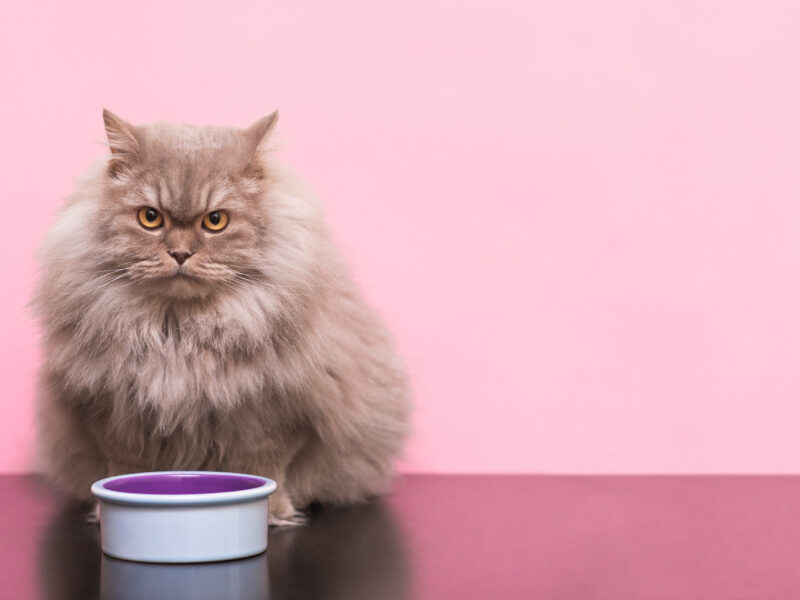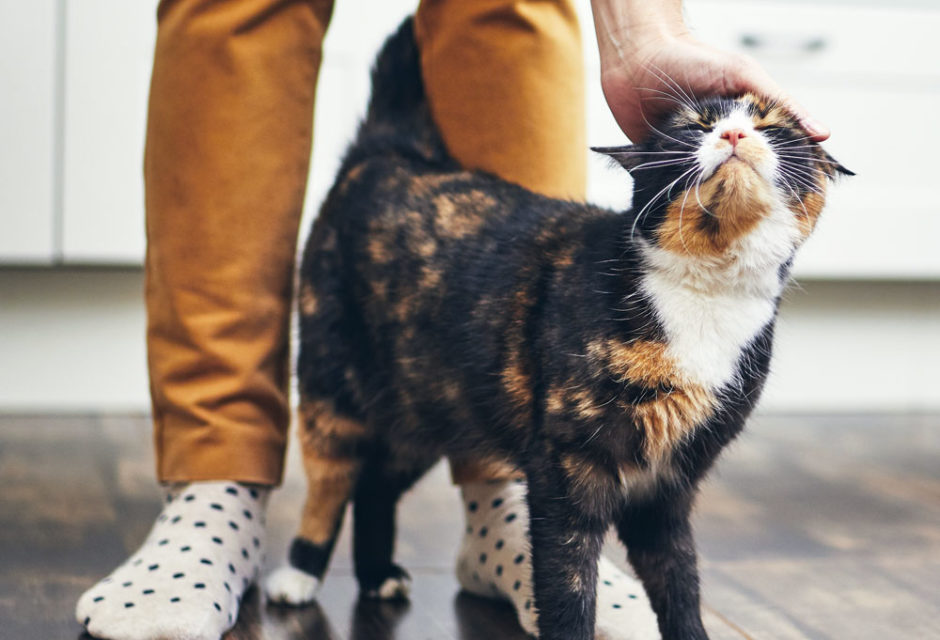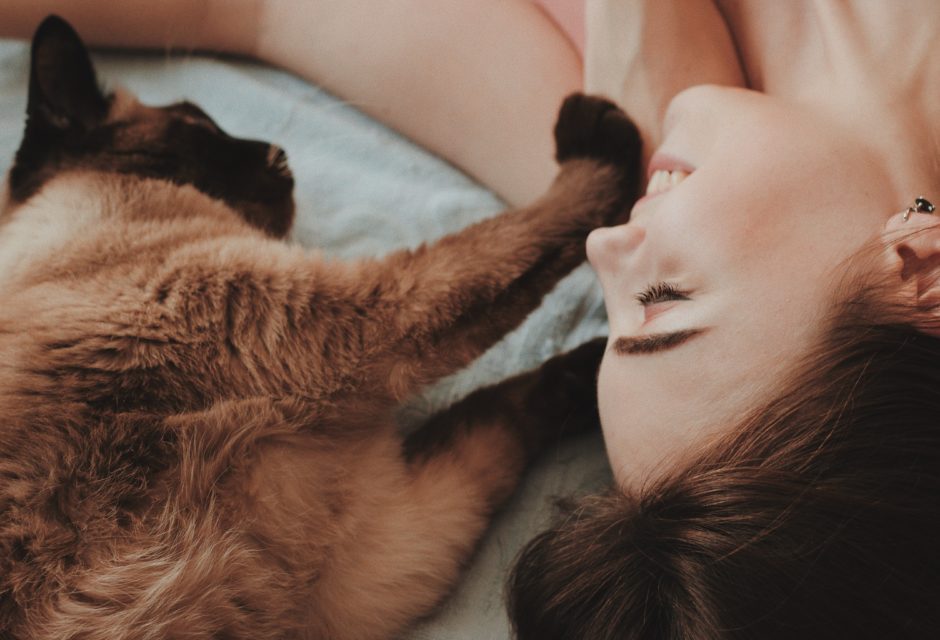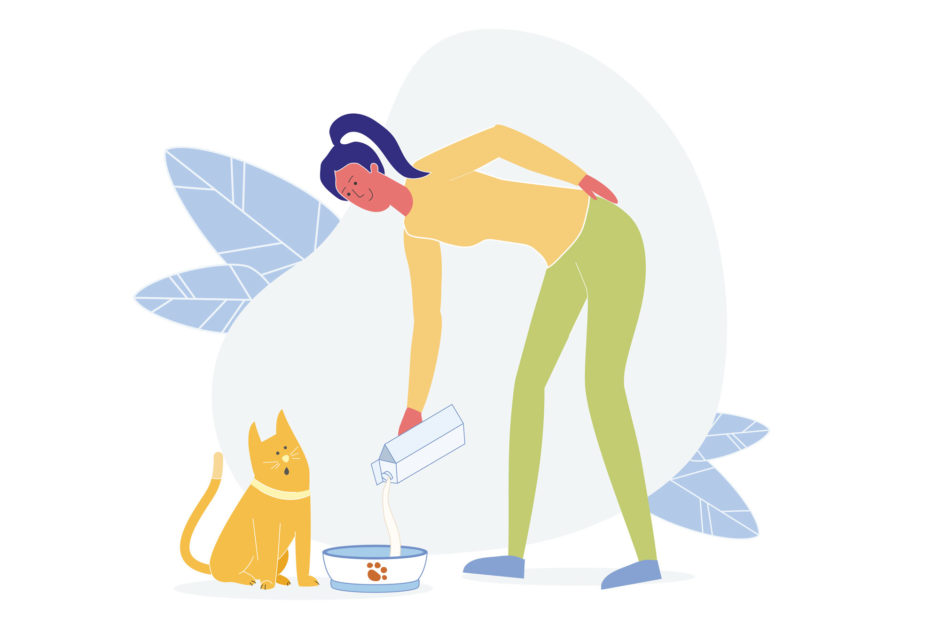

Feeding Your Kitten or Cat
Facts, Myths, and Huge Mistakes
By: Mieshelle Nagelschneider, Cat Behaviourist, host of the TV show My Cat From Hell, and author of the cat behaviour science book, The Cat Whisperer
Last Updated:
Myth: Kittens Should be Fed on a Schedule, Supposedly Like Adult Cats Should Be Fed
Many cat owners report to me that their kitten is “eating too much” or “eating more than their adult cats.”
Fact: A rapidly growing kitten’s metabolism wheel is spinning fast. This means not only do they need more calories per unit of body weight than an adult cat, but they need to be fed more frequently, too. Scheduled meals that are too many hours apart, or kittens not being fed enough calories, can mean both behavioural issues and physical issues, like not reaching their full genetic growth potential.
Until kittens are four to six months of age, they need to have food readily available. Many hungry kittens will eat anything they can get their tiny paws on if they do not always have access to their kitten food. Kittens ingesting non-food items because they are merely hungry can lead to a long-lasting problem through adulthood. An exploratory surgery to remove the duvet button your kitten ingested because she was hungry? Not that uncommon. Of course, kittens are naturally investigative and ultra-curious, but when not fed correctly, the added impulse to investigate edibility can cause harm.
“Cats who are fed only twice a day during scheduled feedings can become agitated, and they can get even more cranky if the food isn’t served on time.” —Excerpt from Mieshelle’s book, The Cat Whisperer
• Behaviour commonly reported by kitten owners who were underfeeding or not feeding their kittens (or cats) frequently enough: constant meowing, more aggressive with the owner or other cats in the home, extremely ravenous when you present their meal, foraging through garbage cans, chewing on kitchen sponges or towels that may have remnants of food on them, stealing food off your fork or plate, frequently on the kitchen counter or table, eating cat litter, chewing on carpet fibers, cords, or corrugated cardboard scratchers—basically anything they can stick in their little mouths.
• Read the Cat or Kitten Feeding Guideline Label. It’s really that easy and very important. Reading the feeding guidelines on the cat food label will help ensure that you are not underfeeding (or overfeeding) your kitten or cat. Kittens require double to triple the adult cat feeding guideline depending on their age and weight. Most “all life-stage” labels will give both kitten and adult feeding guidelines. Kitten food will give you guidelines for kittens by age and weight.
• When was the last time you increased your kitten’s calories? Are you still feeding your six month old kitten the same amount you did when he was three months old? Uh oh. Revisit the feeding directions on the food label monthly! You will also need to weigh your kittens weekly.
• When cats reach approximately one year of age, they can be fed adult cat food, but because they are still growing, they will require more calories than an older cat.
• If feeding a kitten (or cat) a combination of wet and dry food, make sure it meets the total amount of calories they need daily.
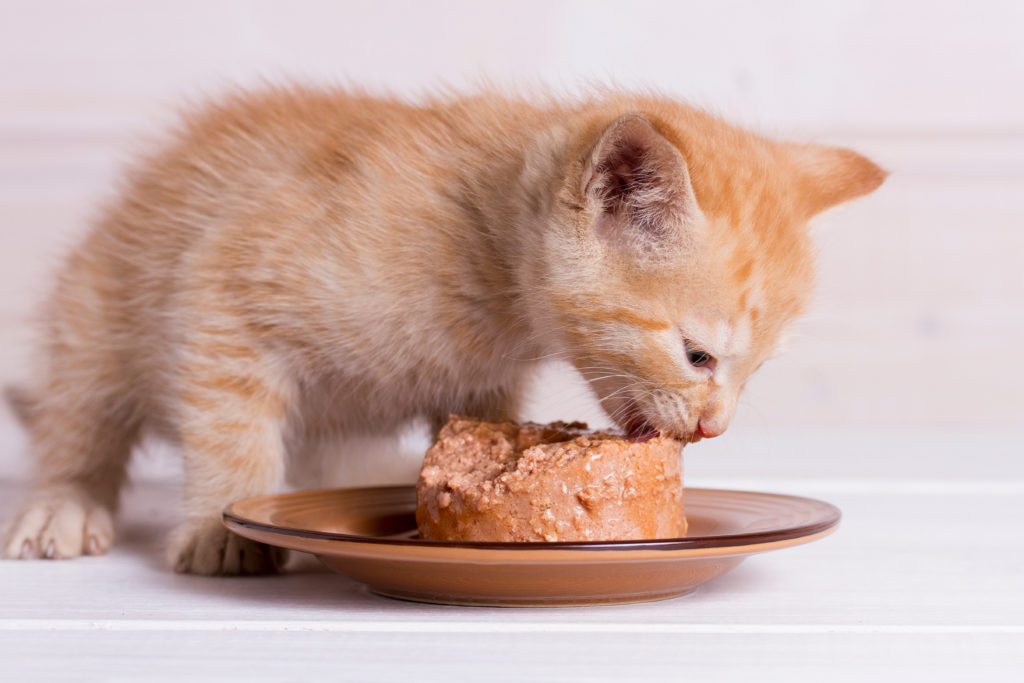
Myth: Dry Food is Better for Cats Than Canned Food
Most cat owners know the basic fact by now that wet cat food is healthier than dry food, but just in case…
Fact: Cats that are fed a dry food-only diet are seen more often for urinary health issues than cats that are fed canned cat food. The problem that so many cat owners face is how to feed their cats four to five meals a day when they can’t leave canned food out all day because of the risk of spoilage. After four hours, wet food should be replaced with fresh food. This is where feeding some amount of dry food can be helpful. Again, the goal is more canned food and less dry, but when it won’t work with your schedule, dry food can be an alternative option. If feeding dry food, choose a grain-free high protein cat food for cats, a kitten dry food for kittens, or an all life-stage food for both cats and kittens. Remember the goal: frequent meals and enough calories. Because dry food can be left out for longer periods of time, this option may work better for both you and your kitten or cat. Dry food can also be placed in food puzzles to keep their little brains occupied during the day. Timed feeders for both wet and dry food are a great option making scheduled meals a possibility when you’re away from home.
Interesting Kitten Fact: Between the ages of 4 and 6 months, your kitten will need more calories than any other time in its life.
Cats are obligate carnivores and need animal protein. Plant protein is not the same as animal protein and is not the specific kind of protein cats are biologically designed to eat. Beyond this obvious, scientifically researched fact, cats also require certain amino acids, vitamins, and minerals. They also have a unique fatty acid requirement. In addition to health problems, ignoring these dietary requirements and making a cat vegetarian, or worse, vegan, can also cause your cat to develop behaviour issues. Cats can become more aggressive with other cats in the household, as well as with their owners if they are lacking proper nutrition. Luckily, the number of cat owners that have made their cats vegan or vegetarian are few, but I’ve seen this unfortunate trend grow in recent years. Hopefully, it’s a passing fad, because it’s a very uninformed decision to place a cat on a diet that is not animal protein-based. Just because a cat owner is vegan doesn’t mean their ethics are good for their cat. Imposing these human beliefs onto cats is anti-animal-advocate and causes harm.
HUGE MISTAKE! It’s not okay to make your cat a vegetarian or vegan.
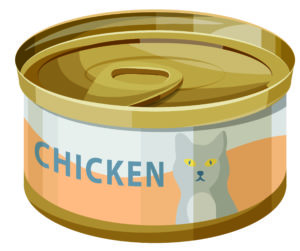
Check out the Best Dry Cat Food of 2024 here!
Check out the Best Wet Cat Food of 2024 here!
Join the newsletter and never miss out on cat content again!
"*" indicates required fields
By clicking the arrow, you agree to our web Terms of Use and Privacy & Cookie Policy. Easy unsubscribe links are provided in every email.







